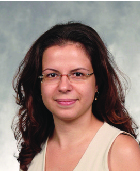צליל אסט 2012-2013

- מוסד לימודים לדוקטורט:
- מכון ויצמן למדע
- תחום אקדמי:
- ביולוגיה
- מנחה/מנחים בדוקטורט:
- ד"ר מאיה שולדינר
- נושא הדוקטורט:
- Uncovering the Translocation and Quality Control Mechanisms of Glycosylphosphatidylinositol (GPI) Anchored Proteins
- מוסד בתר-דוקטורט:
- מכון ברוד
- מוסד נוכחי:
- מכון ברוד
- משרה אקדמית נוכחית:
- בתר-דוקטורנטית
- כתובת דוא"ל:
- tslil.ast@weizmann.ac.il
- עמוד הבית
Tslil Ast is a biologist and Postdoctoral Fellow at the Massachusetts General Hospital. Prior to this she was a PhD student at the Weizmann Institute of Science. Her thesis “Uncovering the Translocation and Quality Control Mechanisms of Glycosylphosphatidylinositol (GPI) Anchored Proteins”was written under the supervision of Dr. Maya Schuldiner. She is studying the cellular secretory pathway in the basic eukaryotic model, the budding yeast.
All cells are characterized by an encapsulating membrane, allowing them to define and regulate their internal environment. The concept of functional isolation is further expanded upon in eukaryotic cells, which are also divided into discreet intracellular organelles, thus generating unique biochemical compartments tailored for specific biological reactions. Such lipid barriers both between and within cells are bridged by a vast array of proteins, that transverse the membrane, partially of fully, thereby allowing the cell to selectively pass information and solutes between different compartments. The first and crucial step in the biogenesis of soluble-secreted and membrane proteins is their translocation through the membrane.
Tslil is currently studying the various pathways by which proteins can be targeted to and translocate through membranes, as well as the safeguards in place when this process goes wrong. Her work harnessed the genetic pliability of the baker's yeast with high-throughput microscopy, developed in Dr. Maya Schuldiner's lab at the Weizmann Institute, to carry out visual genome wide screens. By systematically scanning for genes in whose absence translocation is impaired, she hopes to shed more light on the different pathways which enable this basic cellular process.
